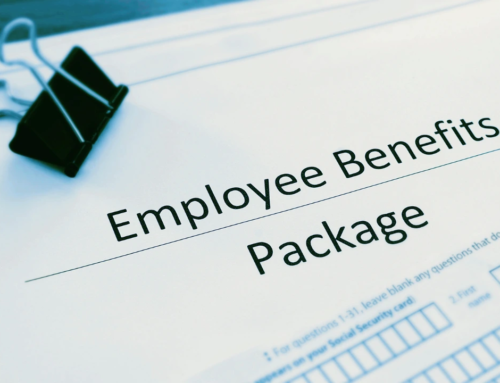Margins in manufacturing are under constant pressure. Tariff changes, material costs, and supply chain volatility already demand close oversight. But labor? That’s the variable that quietly makes or breaks your bottom line. Uncontrolled overtime, last-minute shift reshuffling, and payroll discrepancies raise costs, delay production, and reduce employee confidence.
When payroll is integrated directly with your ERP system, you gain real-time visibility into both labor and material costs. That means operations, finance, and HR can align earlier, act faster, and keep production moving without burning out your workforce.
Why Overtime Is a Manufacturer’s Hidden Margin Killer
How can manufacturers reduce overtime costs without cutting production?
It’s no secret that overtime is expensive. At 1.5× the regular hourly rate, overtime wages quickly inflate labor costs, and for many manufacturers that cost has become routine rather than an exception to the rule. Employers are legally required to pay this premium for hours over 40 per week, manufacturing overtime averages over 3 hours weekly, even during stable periods. This is a pattern that quietly compounds over time and eats into margin if left unchecked.
This becomes a problem when leaders don’t have visibility into those costs until after payroll closes. Without real-time labor data, overtime becomes a reflexive response to staffing gaps, downtime, or production spikes rather than a tool that’s actively managed.
That’s where ERP + payroll integration makes a difference. By tying payroll directly into your ERP, you can monitor overtime trends by line, shift, cost center, or location. Alerts and approvals trigger in real time, not after payroll is processed, giving supervisors a chance to rebalance before costs spiral.
Stop Overtime Before It Starts
Forecast labor needs and track overtime in real time before margins drain away.
How Payroll Accuracy Builds (or Breaks) Retention
What happens when payroll errors go unaddressed on the floor?
A paycheck may seem like a simple transaction. But for hourly manufacturing employees, it represents recognition of their time, effort, and contribution. Errors on that first paycheck can leave a lasting impression and in many cases, lead directly to attrition. Issues with pay and onboarding often connect directly to higher turnover, as we explored in our recent post on PTO and retention.
Workers who don’t see the correct shift differentials, bonuses, or overtime payouts quickly lose trust. And when supervisors can’t explain discrepancies because time tracking, payroll, and job codes aren’t aligned, the issue snowballs.
ERP-connected payroll fixes that. It keeps time entries, GL coding, and project allocations synced in one system, reducing confusion and enabling frontline managers to respond with clarity and confidence.
Retention Starts With Payroll
Accurate, transparent pay builds loyalty, reducing turnover and keeping production strong.
Shift Scheduling Chaos Creates Operational Bottlenecks
What’s the connection between shift scheduling and labor cost blowouts?
Workforce management tools do a solid job publishing rosters. But they don’t always tell the full story.
When payroll isn’t connected to ERP, leaders can’t see the true cost of each schedule change. For example, a simple shift swap might create a cascading set of issues: unexpected overtime, compliance violations (such as required rest periods), or uneven staffing that affects throughput and quality.
Poor shift planning and long hours increase fatigue, errors, and safety risks, which decision makers should recognize as direct threats to throughput, delivery, and margins. OSHA guidance reinforces how extended hours and unusual shifts can compound these risks.
With ERP + payroll integration, your supervisors and ops leaders gain dashboards that show labor cost impacts before approving changes. Similar challenges with seasonal hiring and compliance can be seen across industries, where labor scheduling drives one-third of overtime. That includes modeling OT versus backfill temps, understanding burnout risks, and protecting delivery schedules.
From Shifts to Shipments
Connect payroll to your ERP platform to see how schedules affect costs and production.
3 Steps Manufacturing Leaders Can Take Right Now
- Audit your labor data sources. Check where payroll, time, and job costing data live and whether they connect into your ERP.
- Review overtime from the last quarter. Identify the top drivers and ask if they were preventable with earlier visibility.
- Talk with your ERP or payroll provider. Explore integration options that provide real-time labor cost insights and reduce manual workarounds.
ERP + Payroll Integration: Workforce Visibility for Manufacturers
Many plants unintentionally silo HR and payroll from operations and finance. That disconnect makes it harder to connect labor activity with financial performance.
When payroll data lives inside your ERP system, labor and material costs can be modeled together—one dashboard, one source of truth.
Labor consistently accounts for a large share of manufacturing costs, which means visibility into labor spending is one of the most direct ways leaders can protect margins.
What does an ERP + payroll integration look like?
- Time entries tied to jobs, cost centers, and locations
- GL postings that update in real time as labor accrues
- Unified views of overtime and shift differentials across plants
- Configurable, auditable workflows across state lines and union agreements
From Tariffs to Timecards
ERP platforms such as Acumatica, Sage Intacct, and others help manufacturers manage cost pressures across materials and labor. Our partner I-Tech recently explored how Acumatica supports manufacturers navigating tariff challenges. When combined with payroll integration, these ERP systems also deliver clarity into labor costs, retention, and scheduling.
Using ERP Platforms Like Acumatica or Sage Intacct?
Explore how Inova connects payroll and HR with ERP platforms like Acumatica and Sage Intacct for integrated labor and financial visibility
Why Manufacturers Choose Inova Over Big-Box Payroll Providers
Generic payroll providers often rely on batch file uploads, fragmented workflows, and disconnected systems. That might work for office-based companies. But for manufacturers with complex shifts, multi-state operations, and job-based pay structures, you need more.
Inova was built for mid-market employers like you:
- ERP-first architecture: We connect natively to ERP platforms with direct, real-time connections (eliminating batch delays)
- Real-time sync: Fewer reconciliations, faster closes
- Manufacturing expertise: We know how shift differentials, union rules, and certifications work
- Dedicated support: You get a dedicated team familiar with your business and operations
- Partner ecosystem: We work directly with your ERP partner or VAR to streamline setup and support

 Stop Overtime Before It Starts
Stop Overtime Before It Starts Retention Starts With Payroll
Retention Starts With Payroll From Shifts to Shipments
From Shifts to Shipments


